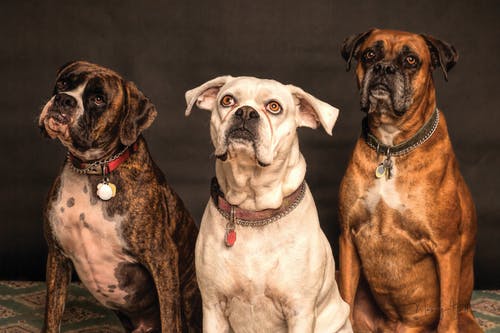
How Often Should I Schedule Dog Grooming and Spa Services?
August 28, 2023Regular grooming plays a huge role in ensuring your beloved furry companion remains in the best of health. Besides enhancing their appearance, it aids in preventing issues like matting and knots, which, if left unchecked, could lead to skin irritation or infections. So, the question is, how often should dog grooming and spa services be scheduled?
Dog Breeds and Their Grooming Schedule
Different dog breeds vary in appearance and have unique grooming needs. Understanding how often to bring your pet to a dog grooming in Fort Lauderdale based on their breed will help you establish a good routine that keeps them looking and feeling their best. Here is a comprehensive guide to the grooming needs of various dog breeds:
Short-Coated Dogs
- Breeds: Boston Terriers, Dobermans, Pinschers, Staffordshire Bull Terriers, Pugs, Boxers, Beagles, etc.
- Grooming Needs: Short-coated dogs, typically have low grooming requirements. Their short fur does not tangle easily, and they generally shed minimally. These breeds usually need baths every 4-6 weeks, depending on their activity level and how dirty they get. Regular brushing is essential to remove loose hair and distribute natural oils, which helps keep their coat shiny and healthy. Occasional grooming with clippers or trimmers may be necessary for specific areas, such as around the ears and paws.
Double-Coated Dogs
- Breeds: Golden Retrievers, Labrador Retrievers, Shiba Inu, Huskies, Samoyeds, etc.
- Grooming Needs: Double-coated dogs have a soft undercoat and a coarser outer coat. They typically shed their undercoat seasonally, which requires more frequent grooming during shedding periods. To manage their thick coats and prevent matting, regular brushing is essential. Brushing should be done at least 1-3 times a week, and daily brushing may be necessary during shedding season. Contrary to popular belief, shaving the coat is not recommended, as it can disrupt their natural insulation and lead to skin issues. Instead, their coat should be trimmed to maintain an appropriate length.
Curly and Wavy Coated Dogs
- Breeds: Poodles, Bichon Frises, American Water Spaniels, Curly Coated Retrievers, etc.
- Grooming Needs: Breeds with curly or wavy coats have hair that tends to get tangled easily. Regular grooming is essential to prevent matting and maintain the coat’s texture. Brushing should be done thrice a week to remove tangles and keep their coat in good condition. Many curly-coated breeds do not shed much, making them suitable choices for individuals with allergies. However, their non-shedding coats require regular grooming to prevent matting and tangling. Professional grooming services should be enlisted monthly to maintain their distinctive appearance and keep their coat in top shape.
Wirey-Coated Dogs
- Breeds: Airedales, Wirehaired Pointing Griffon, Wire Fox Terriers, etc.
- Grooming Needs: Wirey-coated dogs have harsh, bristly hair that tends to get matted close to the skin. Regular grooming is essential to prevent matting and keep the coat tidy. Brushing should be done at least 1-3 times a week, depending on the dog’s activity level and coat condition. Hand-stripping, a process of removing dead hairs by hand, is often necessary for wire-coated breeds to maintain the proper texture and appearance of their coat. Professional grooming and bathing should be done every 1-2 months to keep their coat healthy and free from tangles.
Dog Spa Services
- Essential for Well-being: Dog spa services go beyond pampering; they are crucial for your pet’s overall well-being. These sessions provide various benefits, such as promoting relaxation, boosting circulation, and reducing stress and anxiety in dogs.
- Comprehensive Grooming: A typical dog spa session includes various services to keep your furry friend looking and feeling their best. It involves gentle massages to soothe their muscles and improve blood flow, which is particularly beneficial for senior or active dogs. Additionally, professional groomers provide haircuts, nail trims, ear cleaning, and gland expression to maintain hygiene and prevent discomfort.
- Regular Scheduling: To maintain the benefits of dog spa services, it’s recommended to schedule these sessions once a month. Consistent grooming helps keep your dog’s coat in top condition, reduces shedding, and keeps their nails at a comfortable length.
What about doggy day care? For pet parents with busy schedules, services like doggy daycare can be a lifesaver. It provides regular exercise and social interaction for your pup while you’re at work and often includes grooming services.
Creating a Personalized Grooming Plan for Your Dog
- Unique Grooming Needs: Every dog is different, and their grooming requirements vary based on breed, coat type, and lifestyle. Working with a professional groomer allows you to create a customized grooming plan that meets your dog’s specific needs.
- Breed-specific Grooming: Different breeds have distinct coat textures and lengths, and grooming practices should align with these characteristics. For example, curly-coated breeds may require more frequent brushing to prevent matting, while short-coated breeds may need minimal grooming.
- Lifestyle Considerations: Consider your dog’s lifestyle and activities when creating a grooming plan. Dogs that spend much time outdoors may need more frequent baths to remove dirt and debris, while dogs with sensitive skin might require special shampoos and products.
Best Practices for Home Grooming Between Spa Visits
- Maintaining Cleanliness: Home grooming is essential to keep your dog clean and comfortable between spa visits. Regular brushing helps remove loose hair, prevents matting, and stimulates the skin’s natural oils for a healthy coat.
- Proper Bathing: When bathing your dog at home, use dog-specific shampoos to ensure comfortable water temperature. Follow recommended bathing intervals to avoid overwashing, which can strip their coat of essential oils.
- Nail Trimming: Regular nail trims are crucial to prevent overgrowth, leading to discomfort and potential health issues. Familiarize your dog with the process from a young age to make nail trimming a stress-free experience.
- Ear and Dental Care: Home grooming should also include regularly checking and cleaning your dog’s ears. Also, brush your dog’s teeth and schedule professional dental cleanings to maintain oral health.
Conclusion
Regular grooming isn’t just about keeping your pet looking its best – it’s essential to maintaining their health and well-being. So, the next time you’re thinking about how often to schedule dog grooming and spa services, turn to this guide for answers.



